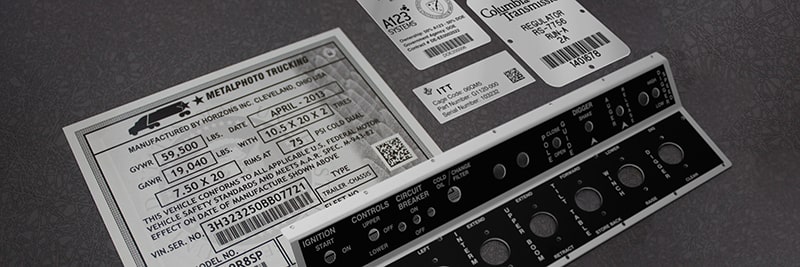Defense suppliers must navigate a series of government regulations when providing their products to the United States military. Given the sensitive nature of the equipment used in the defense industry, there are several unique tracking methods that have been adopted over the years. In the last decade, the U.S. Department of Defense (DoD) has instituted the Unique Identification (UID) program under MIL-STD-130 for tracking all high-value and sensitive government-owned equipment.
This program is especially important for defense suppliers, as all equipment that falls within these guidelines must be properly marked before entering the possession of the U.S. military. To maintain compliance, new and current suppliers have updated their tagging procedures and formatting to match the needs of the UID program. In this post, we’ll explore some important tips that can help defense suppliers streamline their processes in a seamless manner.

The U.S. DoD specifies the types of equipment that must carry a UID label or marking. These requirements are fully specified in the document MIL-STD-130N and the guidelines apply to the following items:
Understanding this information will help you appreciate the scope of the UID program and exactly which assets must be marked for compliance purposes. Marking and tracking assets with UID tags requires important oversight and can add costs of production and upkeep. Standard tracking methods can be used for other items that fall outside of these stringent guidelines.
Barcode labels that are used on UID markings may use either 1D (linear) or 2D (data matrix) symbologies that meet certain requirements. Paragraph 4.4 of MIL-STD-130 contains a summary of these requirements:
These specifications dictate the readability of these markings based upon the technology used to make them. Most quality issues originate from the dot-pitch accuracy of production equipment used during the printing or marking processes. Physical etching can also produce shadowing defects that impact the marking quality. It is therefore critically important to verify the production quality of your chosen label supplier.

A barcode label must be able to withstand the same environmental conditions that the tagged equipment is subject to. In some cases, this can include very harsh environments such as outdoor, marine, and desert locations. A good rule of thumb is that the label should be able to last for the lifetime of the marked product. Choosing a durable label for more extreme conditions will help ensure that the marking lasts for the intended amount of time. A trusted label supplier can help you determine the best material based on the requirements for each application.
Metalphoto® is a durable label option recognized by the National Association of Graphic and Product Identification Manufacturers (GPI) as the most durable material among aluminum substrates. Metalphoto earned the highest score among IUID (Item Unique Identification) label materials in a 2011 environmental sustainability report of the Naval Surface Warfare Center (NSWC) Corona Division, and it meets MIL-STD-130N requirements as well as many defense and government specifications, including but not limited to:
Ultimately, it is up to the supplier to create an appropriate UID marking for each applicable piece of equipment. Failure to do so can result in fines, loss of business, and other penalties. When choosing a label, it is also important to consider the attachment method that will be used. Physical attachment with screws or pins is possible with metal labels, and a strong adhesive can be used for other label materials. Choosing an attachment method that is appropriate for each application will help eliminate the likelihood of a lost label.
Some flexibility is allowed for the specific design of each UID label, but some important characteristics must be present. Below you’ll find some helpful UID design tips that defense suppliers can use to select a suitable format. These design elements should be reviewed for each individual item before tagging:
The size of each label can be determined by the supplier, with some specifications that are listed in MIL-STD-130N. As with all design criteria, it is a good practice to compare your final design with the individual requirements to determine compliance.
The UID program has created a unified and trusted tracking system for highly sensitive and important U.S. military assets. Defense suppliers are at the front-end of this process and have the opportunity to design effective markings for their products. With a deep understanding of the relevant guidelines, it’s possible to create a tagging program that is effective and solidifies your position as a trusted defense supplier.
Our sales engineers are experts in automatic asset tracking, tagging and identification,a nd can answer all your questions. Get in touch now.
Lets Talk ›